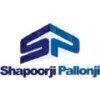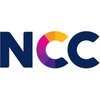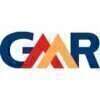Filter interviews by
TCE Interview Questions and Answers
215 Interview questions
Intrigation refers to the integration of various systems or components in engineering projects for optimal functionality.
Intrigation involves combining different engineering disciplines, such as civil, mechanical, and electrical.
For example, in a building project, intrigation ensures that structural design aligns with electrical and plumbing systems.
It enhances project efficiency by streamlining communication amon...
The IS code for tiles is IS 15622:2006, which specifies standards for ceramic tiles used in construction.
IS 15622:2006 covers specifications for ceramic tiles.
It includes guidelines for dimensions, surface quality, and performance.
The code applies to various types of tiles, including glazed and unglazed.
Example: Vitrified tiles are also covered under this standard.
CAD files typically use extensions like .dwg, .dxf, and .dgn, which are essential for storing design data and drawings.
.dwg - The primary file format for AutoCAD, containing 2D and 3D design data.
.dxf - Drawing Exchange Format, used for enabling data interoperability between AutoCAD and other software.
.dgn - Used by MicroStation, another CAD software, for 2D and 3D design files.
A permit is an official document granting permission to perform specific activities, ensuring safety and compliance with regulations.
Permits are often required for hazardous activities, such as hot work (welding) or confined space entry.
They ensure that safety measures are in place before work begins, reducing the risk of accidents.
Examples include building permits for construction, environmental permits for waste...
Identifying and mitigating hazards in tunnels is crucial for ensuring safety during construction and operation.
Structural Hazards: Assess the integrity of tunnel walls and ceilings to prevent collapses; for example, using rock bolts for stabilization.
Air Quality: Monitor for harmful gases like carbon monoxide and methane; implement ventilation systems to ensure fresh air circulation.
Water Ingress: Identify potenti...
JSA, or Job Safety Analysis, is a process to identify hazards and implement safety measures before starting a job.
JSA involves breaking down a job into steps to identify potential hazards.
It helps in developing safe work procedures to mitigate risks.
For example, in construction, a JSA might identify fall hazards when working on scaffolding.
JSAs are often used in industries like manufacturing, construction, and oil...
Essential measurements ensure safety, efficiency, and compliance in piping engineering projects.
1. Pipe Diameter: Measure the internal and external diameters to ensure proper fit and flow capacity.
2. Pipe Length: Accurate length measurements are crucial for installation and to avoid wastage.
3. Elevation Levels: Check the elevation of the installation site to ensure proper drainage and flow.
4. Wall Thickness: Measu...
An operating system (OS) is software that manages computer hardware and software resources, providing services for computer programs.
Acts as an intermediary between users and computer hardware.
Manages system resources like CPU, memory, and storage.
Examples include Windows, macOS, Linux, and Android.
Provides a user interface, either command-line or graphical.
Handles file management, process management, and security...
Quay Crane long travel typically allows for a few meters of movement on either side, depending on design and operational requirements.
Quay cranes usually have a long travel distance of around 20-30 meters on either side.
The exact distance can vary based on the terminal's layout and crane specifications.
For example, a crane designed for a specific terminal may have a longer reach to accommodate larger vessels.
STS cranes typically operate at voltage levels ranging from 400V to 690V, depending on the application and design specifications.
Voltage levels can vary based on the manufacturer and specific crane model.
Common voltage levels for STS cranes include 400V, 480V, and 690V.
Higher voltage levels may be used for larger cranes or specific operational requirements.
For example, some ports may use 6.6kV for larger STS crane...
TCE Interview Experiences
266 interviews found
I appeared for an interview in May 2025, where I was asked the following questions.
- Q1. What is Concrete?
- Ans.
Concrete is a composite material made from cement, water, aggregates, and additives, used for construction and infrastructure.
Concrete is composed of cement, water, fine aggregates (sand), and coarse aggregates (gravel or crushed stone).
It is known for its high compressive strength, making it ideal for structural applications like beams and columns.
Concrete can be molded into various shapes and sizes, allowing for vers...
- Q2. What is intrigation
- Ans.
Intrigation refers to the integration of various systems or components in engineering projects for optimal functionality.
Intrigation involves combining different engineering disciplines, such as civil, mechanical, and electrical.
For example, in a building project, intrigation ensures that structural design aligns with electrical and plumbing systems.
It enhances project efficiency by streamlining communication among var...
- Q3. What is derivatives
- Ans.
Derivatives measure how a function changes as its input changes, representing rates of change in calculus.
A derivative represents the slope of a function at a given point.
Example: The derivative of f(x) = x^2 is f'(x) = 2x, indicating how steep the curve is.
Derivatives are used in physics to calculate velocity and acceleration.
In economics, derivatives help determine marginal cost and revenue.
I applied via Campus Placement
It was a technicaL + aptitude test with 60 minutes duration.
(2 Questions)
- Q1. Basic questions regarding the projects that i have done.
- Q2. They asked me about my favourite subjects and then they asked some basic questions regarding those subjects.
(1 Question)
- Q1. HR round in TCE is not an interview round rather it is a video assessment wherein we were given with two HR questions and we have to record a video answering the questions. maximum duration of the video sh...
Interview Preparation Tips
I appeared for an interview in Dec 2024.
It is easy for both aptitude and core subjects.
(1 Question)
- Q1. Most of the questions were from structural design. They also asked on geotechnical and transportation and i guess this is because i have done my internship in highway and currently doing project in geotech
(1 Question)
- Q1. This was a video round with 2 questions. About yourself? How well do you fit in the company? Skills that you posses?
Interview Preparation Tips
I applied via Approached by Company and was interviewed in Jul 2024. There was 1 interview round.
(3 Questions)
- Q1. If you need to increase terminal residual pressure in pipe, what would you do?
- Ans.
To increase terminal residual pressure in a pipe, you can adjust the pump speed, increase the pipe diameter, or reduce the pipe length.
Adjust the pump speed to increase the pressure in the pipe.
Increase the pipe diameter to reduce friction losses and increase pressure.
Reduce the pipe length to minimize pressure drop along the pipe.
Check for any leaks or blockages in the pipe that may be causing pressure loss.
- Q2. What are the different Concrete grades?
- Ans.
Concrete grades are classifications that indicate the strength of the concrete mix used in construction projects.
Concrete grades are classified based on their compressive strength, measured in megapascals (MPa).
Common concrete grades include C10, C15, C20, C25, C30, C35, C40, C45, C50, and C60.
Higher grade concrete mixes are used for projects that require stronger and more durable structures.
The specific grade of concr...
- Q3. What are the other software you are experienced in designing water supply networks
- Ans.
I am experienced in designing water supply networks using software such as EPANET, WaterCAD, and Bentley WaterGEMS.
EPANET
WaterCAD
Bentley WaterGEMS
Interview Preparation Tips
- Water supply analysis
- Basic civil engineering
- Software
I appeared for an interview in Jul 2024.
(4 Questions)
- Q1. What about safety management
- Ans.
Safety management involves implementing policies, procedures, and practices to ensure a safe work environment.
Safety management includes risk assessments to identify hazards and implement controls.
Regular safety training and communication are essential for promoting a safety culture.
Incident reporting and investigation help in identifying root causes and implementing corrective actions.
Safety audits and inspections are...
- Q2. What is leading and lagging.
- Ans.
Leading and lagging are terms used in project management to describe the relationship between two activities.
Leading refers to an activity that must be completed before another activity can start.
Lagging refers to an activity that is delayed or starts after another activity has already begun.
Leading activities help in speeding up the project schedule, while lagging activities help in delaying the project schedule.
For e...
- Q3. Legal documents are required for lifting equipment.
- Q4. OSHA Compliances
(2 Questions)
- Q1. Disscus about salary .
- Q2. Disscus about joining date.
I applied via Campus Placement and was interviewed in Dec 2024. There were 3 interview rounds.
Quantitative reasoning andtranducer English.
(1 Question)
- Q1. What is a transducer
(1 Question)
- Q1. Why do you want to join TCE?
I appeared for an interview in Mar 2025, where I was asked the following questions.
- Q1. Can you describe your past professional experiences?
- Ans.
Experienced civil manager with a strong background in project management, team leadership, and infrastructure development.
Led a team of engineers in the successful completion of a $5 million highway expansion project, improving traffic flow by 30%.
Managed the construction of a multi-story commercial building, ensuring adherence to safety regulations and project timelines.
Implemented cost-saving measures that reduced pr...
- Q2. Concrete technology techniques, quality check, billing
Interview Preparation Tips
I applied via Campus Placement and was interviewed in Jul 2024. There was 1 interview round.
(2 Questions)
- Q1. What are the various code books used in civil engineering?
- Ans.
Various code books used in civil engineering include ACI 318, AISC Steel Construction Manual, and ASCE 7.
ACI 318 - American Concrete Institute's Building Code Requirements for Structural Concrete
AISC Steel Construction Manual - American Institute of Steel Construction's manual for designing steel structures
ASCE 7 - American Society of Civil Engineers' Minimum Design Loads for Buildings and Other Structures
- Q2. Rcc and steel basic formulas and considerations.
Interview Preparation Tips
Maintain gpa above 8.0*
Be good at communication.
Chill out don't stress while answering. U'll get ur shot.
(5 Questions)
- Q1. Sure it possibility
- Q2. Ok take all responsibility..
- Q3. Document controller
- Q4. All deciplen document
- Q5. Correspondance related job..
I appeared for an interview in Mar 2025, where I was asked the following questions.
- Q1. Can you tell me about yourself?
- Ans. Hello, my name is bhumika patil. I recently graduated from north Maharashtra university jalgaon with a degree in BBA, and I have completed my internship in Dizec solution PVT. LTD.of experience working in marketing.
- Q2. What position are you interested in working for?
- Ans. As a Castamar relationship manager
- Q3. What are your short term and long term goals?
- Ans. My long-term goals are to pursue opportunities that help me grow.
- Q4. Why should we hire you?
- Ans. Emphasize your eagerness to learn, your transferable skills, and your potential for growth.
Top trending discussions






TCE Interview FAQs
The duration of TCE interview process can vary, but typically it takes about less than 2 weeks to complete.
Tell us how to improve this page.
TCE Interviews By Designations
- TCE Consultant Interview Questions
- TCE Assistant Manager Interview Questions
- TCE Engineer Trainee Interview Questions
- TCE Civil Site Engineer Interview Questions
- TCE Site Engineer Interview Questions
- TCE Senior Engineer Interview Questions
- TCE Graduate Trainee Interview Questions
- TCE Manager Interview Questions
- Show more
Interview Questions for Popular Designations
Overall Interview Experience Rating
based on 218 interview experiences
Difficulty level
Duration
Interview Questions from Similar Companies
|
Assistant Manager
650
salaries
| ₹5.2 L/yr - ₹14 L/yr |
|
Senior Engineer
426
salaries
| ₹4 L/yr - ₹12 L/yr |
|
Manager
348
salaries
| ₹6.7 L/yr - ₹18.8 L/yr |
|
Senior Manager
320
salaries
| ₹9.2 L/yr - ₹24 L/yr |
|
Consultant
292
salaries
| ₹2.9 L/yr - ₹13 L/yr |

Tata Projects

Shapoorji Pallonji Group

Kalpataru Projects International

Nagarjuna Construction Company
- Home >
- Interviews >
- TCE Interview Questions













